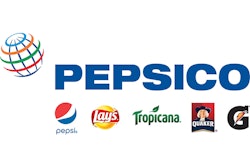The ongoing Industry 4.0 revolution is already pressure testing the readiness of global manufacturing operations. Ready or not, increased consumer demand for high quality, semiconductor-driven technologies has pulled manufacturers into the Industrial Internet of Things (IIoT). To stay competitive in this environment, just about every machine will require intelligence and the ability to communicate with other machines. And what the machines are saying will need to be shared across the supply chain.
To assure that quality keeps pace with the complexity and sheer production numbers of today’s electronics, a new, holistic manufacturing approach is needed for faster, accurate discovery of the weakest link in the supply chain: an end-to-end digital thread with machine learning and IoT analytics.
The digital thread is a technique used to track the genealogy and data of a product from each component to the end-product. As the notion of sharing data becomes a critical component in assuring an end-user won’t face a massive recall, it is only a matter of time before it becomes standard operating procedure.
The fundamental element, and the potential sticking point, of introducing the digital thread is that manufacturing data needs to be shared. That includes sharing data inside a company, as well as with every company along the supply chain. That could mean showing data from each component’s fabrication and test phases, through assembly, inspection and rework and finally to usage data from the field.
Big Data Can Prevent Big Problems
Ideally, manufacturers can gather multiple forms of data at each stage of a manufacturing process, process data in real time, and spot trends that can predict various outcomes. And when a possible outcome indicates a potential failure or low-quality component, a company needs to know the exact stage at which such a flaw was introduced so that it can be stopped.
This is a lot of data. It is almost impossible to make high-level decisions without unifying the data and conducting proper analysis. Specialized tools are needed to perform these functions and spot any possible inefficiencies and failings within the manufacturing process early on in order to prevent unwanted product defects down the line.
The Golden Thread: A Tough Sell
Manufacturing has always been competitive and the increasing demand for technology components is applying more pressure. Falling behind or overlooking quality issues to meet demands for quantities is a sure-fire way to guarantee a recall is coming the end of the digital supply chain. This where the value of a digital thread shines through. Connecting the data from each link in the supply chain can vastly improve tracking the source of quality issues.
Most companies won’t entertain the idea of opening the doors into their proprietary data. They cite concerns such as exposing IP to potential competitors, releasing data that can be leveraged against involved parties and liability risks. Companies can overcome that challenge and more, and open up siloed data while protecting proprietary rights: the solution is a third-party hub.
This entity sits between the parties, enabling shared analytics while hiding the “raw” data from other parties in the supply chain. Only insights derived from the data are sent from the hub to the different parties. The hub ultimately provides insight into the entire length of the supply chain to track down the source of the issues – which may have not otherwise have been discovered until the end of the supply chain.
The hub can make heavy use of machine learning to overcome the inherent difficulty of handling the multi-dimensional complexity and huge volumes of data that make up the digital thread. It can therefore provide suppliers and customers insights which reduce time-to-quality and time-to-market for new products and quickly identify the root-cause of complex issues. It can even enable targeted recalls of faulty systems before they fail.
Manufacturing data is precious. And mining this data to gather knowledge is the equivalent of discovering gold. What can be woven from a digital thread are solid increases in profits and a substantially improved bottom line.
Michael Schuldenfrei is Corporate Technology Fellow at Optimal+.























